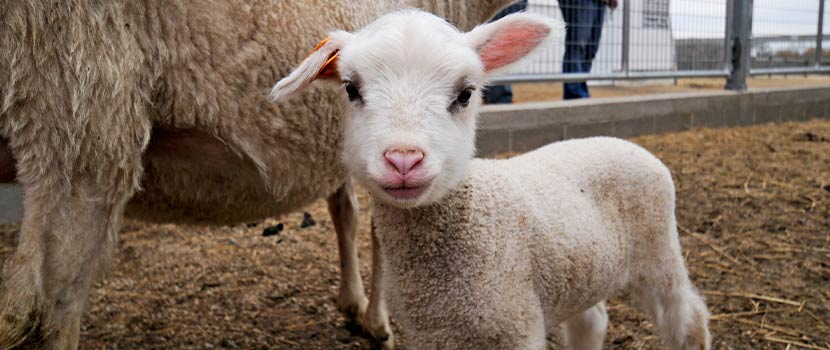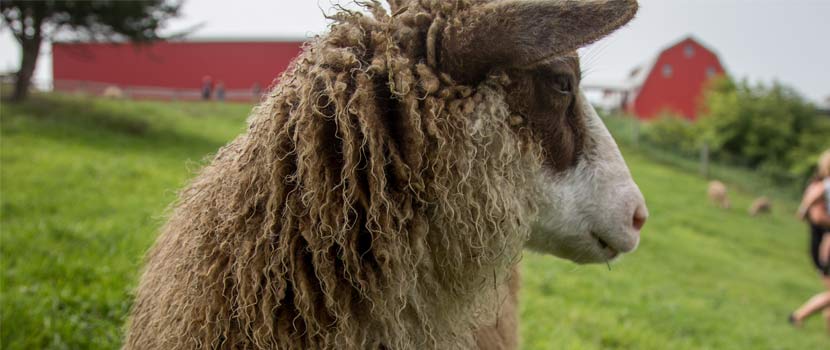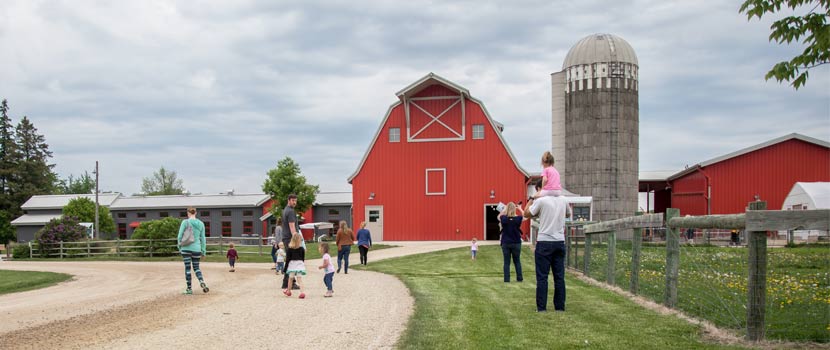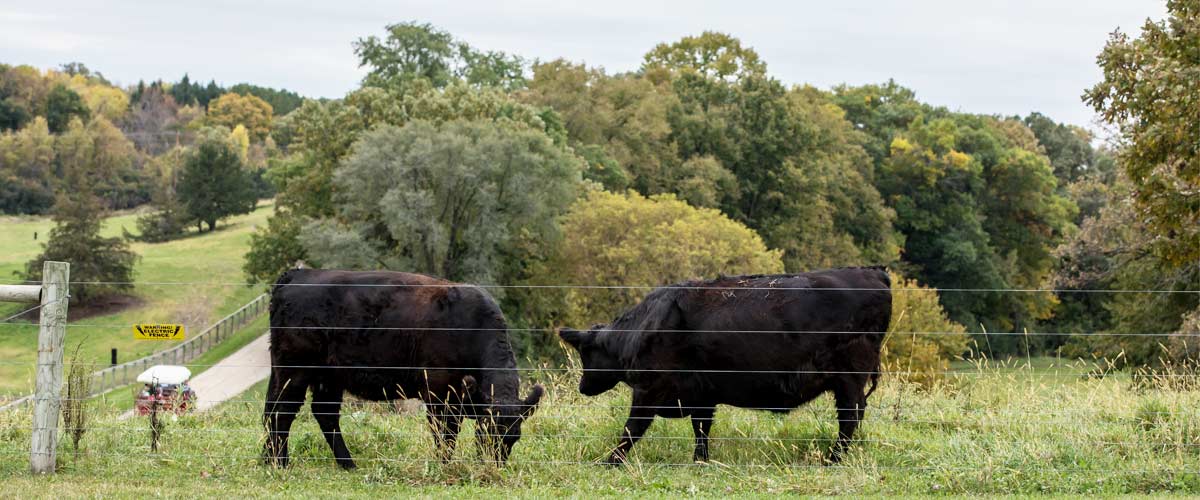
Life on the Farm: Raising Livestock at Gale Woods
By: Tim Reese
October 05, 2020
Category: Farm Connections
Gale Woods is a unique place within Three Rivers Park District because it has a real working farm at the center of the park where visitors can gain an understanding of agriculture, food production and land stewardship.
One of the biggest attractions for visitors is the animals. For many urban residents, the exhibits at the Minnesota State Fair are the only place to view livestock up close. While it is a fun diversion from the mini-donuts, corn dogs and carnival rides, this is not really their natural habitat. Seeing the livestock at Gale Woods Farm is an opportunity for visitors to learn about how they are raised and gives them a chance to reconnect to the source of their food.
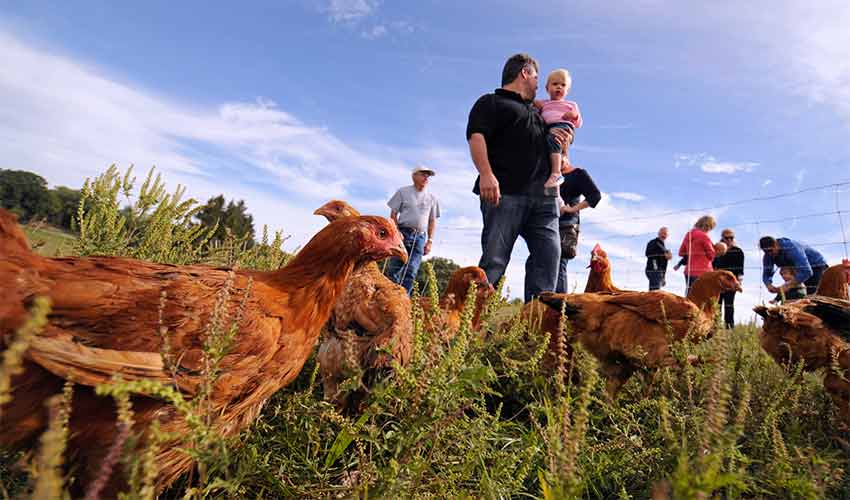
As we reiterate with the students who visit Gale Woods Farm on field trips, these animals are not pets but rather working livestock, and they all have jobs to do. Not only do they produce food and fiber for us, but they also play important roles in a diversified food production system.
What it Means to Be Pasture-Raised
When people think of agriculture in Minnesota, they often think of corn and soybeans, and with good reason. According to 2019 USDA statistics, over 50% of the 25 million acres of farmland in Minnesota was planted with these two crops, which had a value of over seven billion dollars that year.
All that grain can be used as animal feed and some of it does feed the animals at Gale Woods, too. But because our landscapes are not flat and because we do not have large farm equipment, we don’t raise animal grain crops here. Instead, we focus on pastures and hayfields, which make up 95 of our 100 acres of farmland. So you might say we are a grass farm.
Grass is a perennial crop. Because of this, it pulls carbon out of the air and adds it to the soil. This helps offset the greenhouse gasses emitted by the digestive processes of the livestock. Cow farts and burps globally are a significant contributor to climate change. As a result, many environmentally-conscious eaters either reduce or eliminate meat in their diet. We raise animals on pasture both because it is more sustainable and because it is healthier for them.
Now let’s look at the different animals on the farm.
Cattle
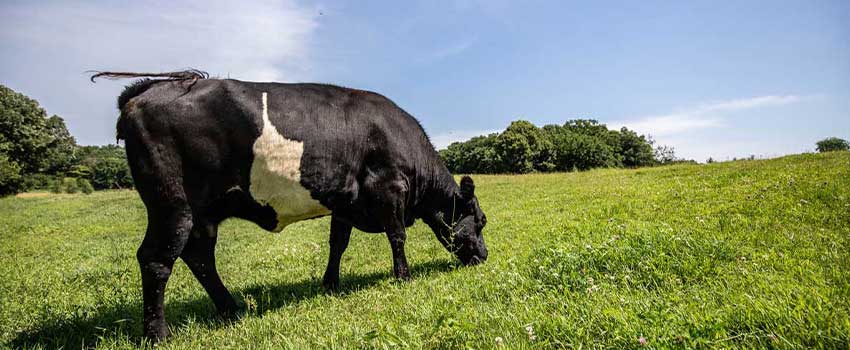
We raise Galloway Cattle outside on pasture year-round and all of their winter hay is grown here at Gale Woods.
The cows are bred through artificial insemination in the summer, followed up with natural breeding by a bull that visits the farm in the fall.
Our cows calve on pasture from April through October and calves are weaned at 3 to 4 months old. It takes 18-24 months for a steer to reach a market weight of approximately 1,000 pounds.
Pigs
The breed of pig we raise varies year to year because we purchase bred gilts (young females) or sows (mature females) from different local farms.
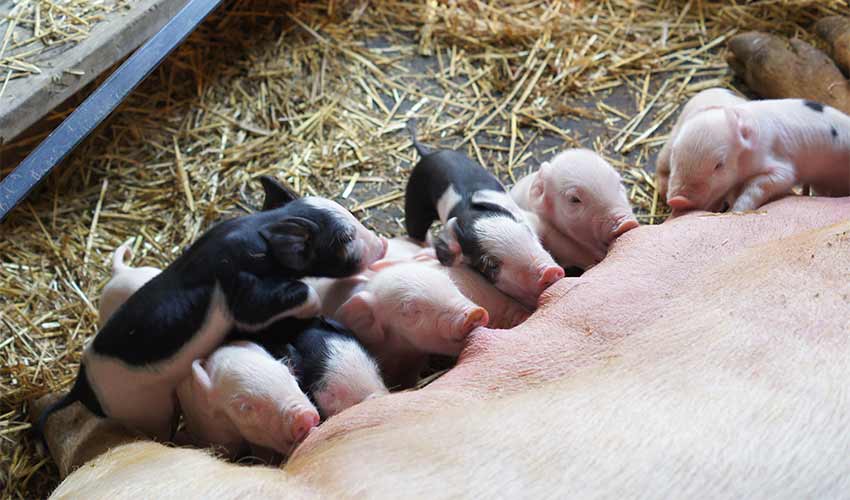
They farrow, or give birth, in deep straw with freedom of movement in early spring inside our barn. The piglets are weaned after 6 to 8 weeks and are moved out to pasture in early June. After weaning, the gilts or sows are processed for meat.
The piglets are raised outside on forage crops such as radishes, turnips, buckwheat and oats that are planted in our fallow gardens. They also receive milk from our dairy cow, expired produce and bakery goods from local grocery stores and food shelves, scraps from our kitchen, leftovers from students’ lunches and produce gleaned from our gardens.
It takes 8 to 10 months for them to reach a market weight of 150-250 pounds.
Sheep
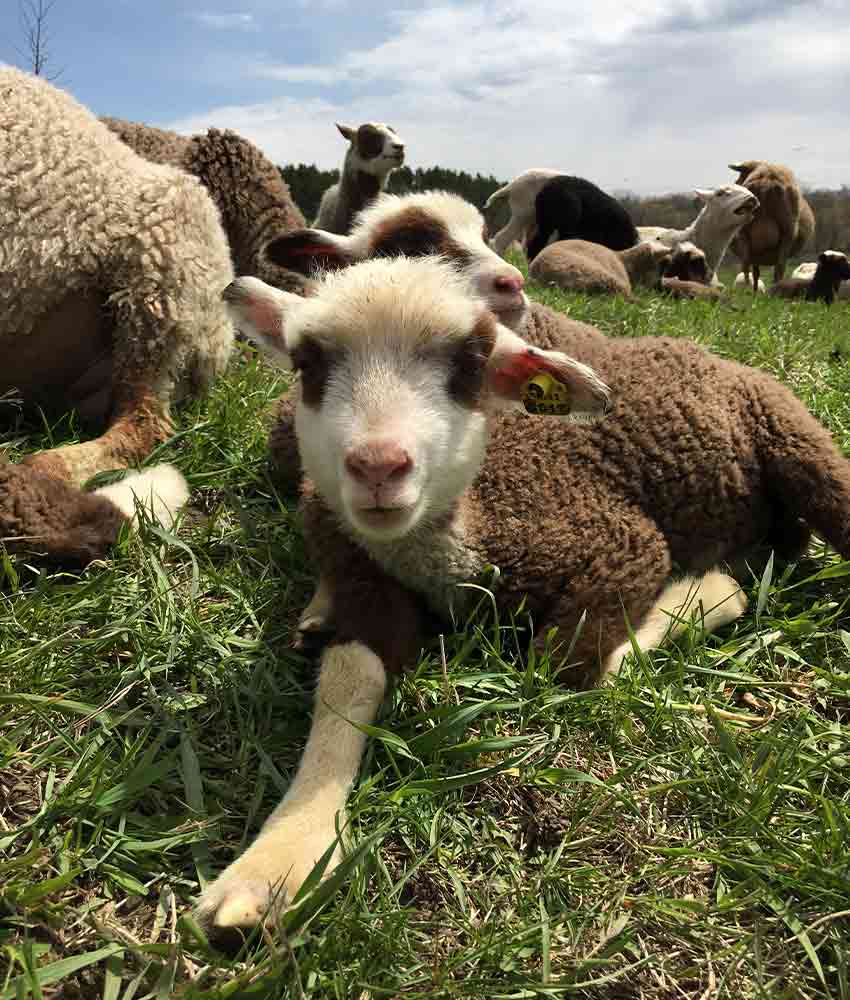
We raise Finnsheep for both their meat and wool. We own our rams and manage our breeding program.
Ewes are bred in November and lamb in April. The lambs are weaned at 8 to 10 weeks of age. They have outside access year-round and are rotated through the pastures with the beef cattle.
It takes a lamb 8 to 12 months to reach a market weight of 75-125 lbs.
Meat Chickens and Turkeys
We purchase Freedom Ranger chicks from a hatchery in Pennsylvania. These brown-feathered poultry are bred for pasture-raising. They make excellent use of the forage on our pastures and orchard where we raise them from May through October.
They are raised for seven to 21 days in our brooder and then in our orchard or on pasture in portable pens that are moved daily. They reach a market weight of 5-8 lbs. in 12-14 weeks.
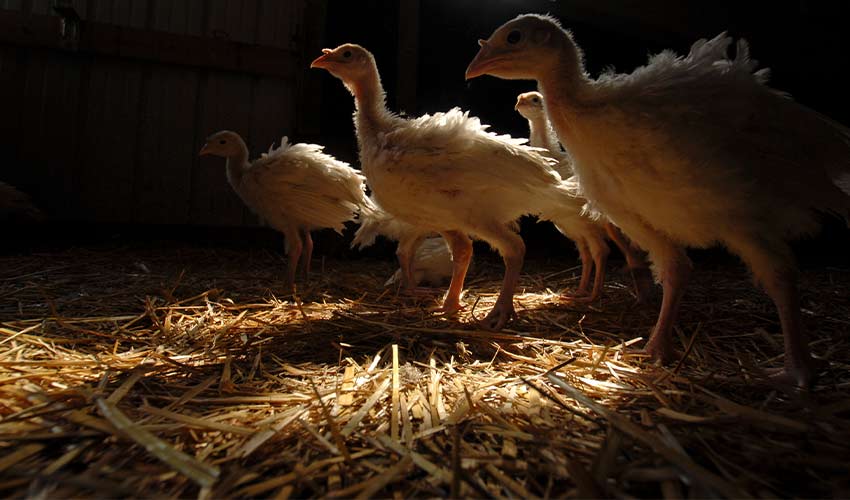
We raise Broad Breasted Bronze and Eastern White Turkeys for Thanksgiving. Poults (baby turkeys) arrive in June and are raised in our brooder for one month. They are then moved out to pasture for four months before heading to the butcher the day before Thanksgiving.
Both are fed local, transitional (from organic fields that aren’t yet certified) corn/soy-based feed.
Laying Hens
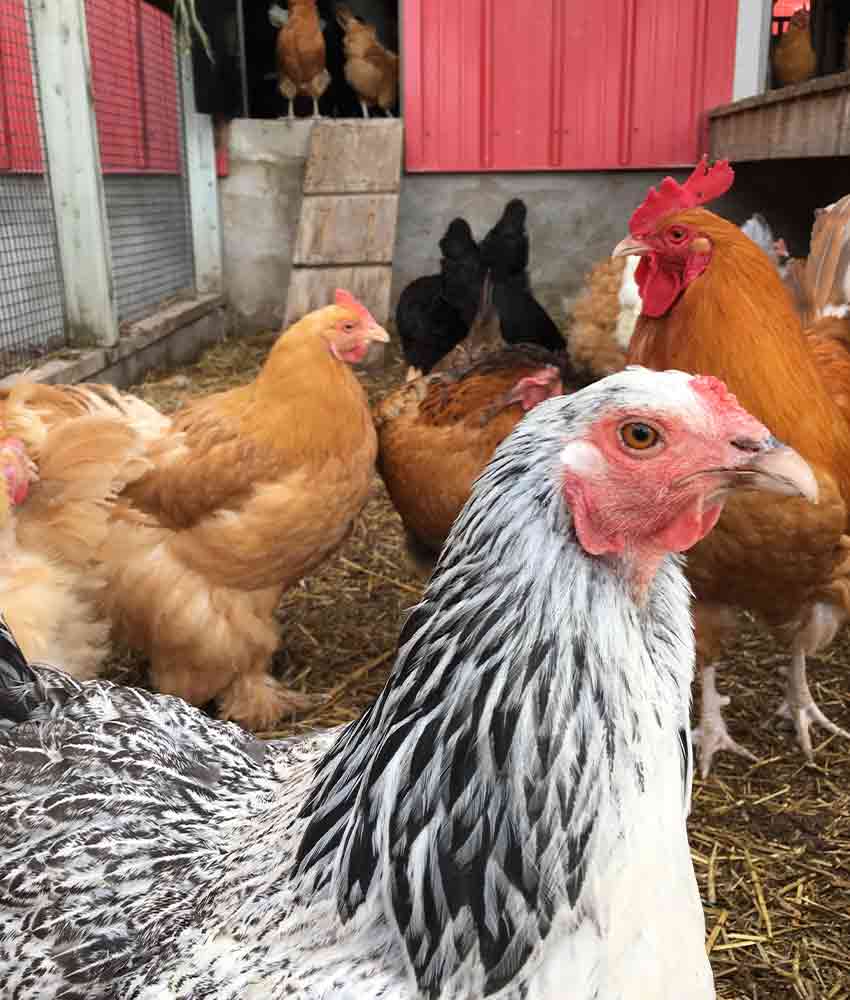
Our egg-laying flock is a mix of Light Brahma, Barred Rock, Buff Orpington, Americauna, Leghorn and Red Star breeds.
Our flock spends their first year in the barn coop where they have access to an outside run. In the second year they move out to a portable coop where they follow the beef cattle through our rotational grazing system and have free range on the pasture.
Processing
One of the most important steps in the process of raising livestock is taking the animals to market.
We have the good fortune of partnering with Odenthal Meats near New Prague. This family-run butcher shop is certified by the Humane Farm Animal Care for using procedures which place high value on the welfare of the animals. An animal gives up its life for us to eat meat and while this is a fact we don’t try to hide, we do place importance on how the animals are treated and this extends to our processing facility.
We also work with Odenthals because they do high quality, custom work with the small number of animals we raise. As we’ve discovered during the global Covid-19 pandemic, meat processors are a vital and fragile link in our food system. While the massive packing plants that produce vast majority of meat in this country are very efficient, they are susceptible to disruption. And there are very few small butcher shops left. It is highly skilled, physically demanding work and we are grateful to have a partnership with them.
All of our products are for sale by the cut at our Saturday Morning Farm Market from 9:30 AM–Noon through mid-October. Until our store reopens, it is also available by special order. Contact us at gwf@ThreeRiversParks.org for more information.
About the Author
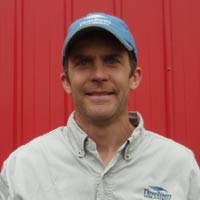
Tim Reese has been the Farm Supervisor at Gale Woods Farm since it opened in 2003. He manages the facility, livestock and gardens at this educational and production farm. While he has been known to don a scarecrow costume and sing a raucous version of Old MacDonald at Halloween events, he believes that food production and farmers have a serious and important role to play in protecting our environment and promoting land stewardship. When not busy at Gale Woods, Tim enjoys cross-country skiing, biking and exploring the natural world with his family.
Related Blog Posts
Raising Farm Babies: The Good, The Bad and The Ugly
By: Tim Reese
The most exciting time of the year at Gale Woods is upon us – spring babies! Learn what it takes to birth sheep, pigs, and chickens on the farm and how this special season can be very demanding on a farmer's time and attention.
Sheep and Fiber at Gale Woods
By: Tim Reese
Wool is a versatile fiber that has been woven into human history for thousands of years. Learn more about the breed of sheep at Gale Woods Farm and dive into the process of making fleece into yarn.
Gale Woods Farm is a unique part of Three Rivers Park District. Learn how the farm came to be and how farming and environmental stewardship go hand-in-hand.
